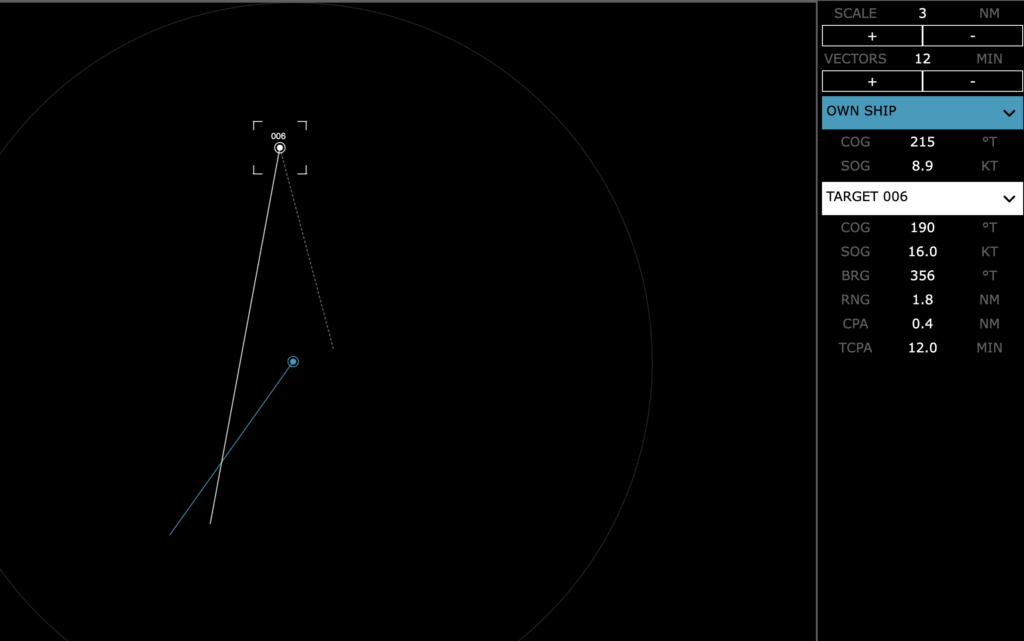How to tell the difference between a crossing and overtaking situation and what happens when things go wrong.
Lots of near misses and collisions at sea are caused by masters not knowing what type of situation they are in. This close-quarters incident in New Zealand is a good example of how a crossing and overtaking situation can be confused.

The two vessels shown above eventually passed only 20 yards from each other. The report from the incident describes that ‘Own Ship’ in the image thought that ‘TARGET 006’ was overtaking them, whereas ‘TARGET 006’ thought that they were in a crossing situation. Both were power-driven vesselsThe term 'power-driven vessel' means any vessel propelled by machinery. More, not in a narrow channel or traffic separation schemeA traffic separation scheme (TSS) is similar to a highway at sea. A TSS is often made up of 'traffic lanes' and 'separation zones' which prevent vessels from meeting head on and therefore reduce the likelihood of collision. It is common to find traffic separation schemes in areas of high traffic density such as straits and choke points. More, and no ‘special rules’ applied in this area.
Who was right?
Before reading on, take a look at the radar above, which vesselThe word 'vessel includes every description of water craft, including non-displacement craft, WIG craft and seaplanes, used or capable of being used as a means of transportation on water'. had correctly understood the situation?
‘TARGET 006’ thought that International COLREGs Rule 15 – Crossing situation applied in this situation.
Crossing Situation Key Points;
- Two Power Driven Vessel ✅
- Risk of CollisionThe term risk of collision is described in Rule 7. 'Every vessel shall use all available means appropriate to the prevailing circumstances and conditions to determine if risk of collision exists. If there is any doubt such risk shall be deemed to exist.' More (1.8 nm, CPA 0.4 nm, TCPA 12 min, no compass bearings recorded). 🤔
The ‘Own Ship’ applied International COLREGs Rule 13 – Overtaking.
Overtaking Situation Key Points;
- ‘Vessel is coming up with another .. from a direction greater than 22.5 degrees abaft her beam’ ✅
- 225 + 90 = 305 (Own Ship’s starboard beam)
- TARGET 006 bearing 356 from Own Ship
- 356 – 305 = 51 degrees (abaft Own Ship’s starboard beam)
- ‘When a vessel is any doubt she shall … assume [she is overtaking]’ ✅
Both rules seem to apply in this situation but there is a very important sentence in Rule 13 that helps us understand what we should do.
“Notwithstanding anything contained in the Rules of Part B, Section I & II, any vessel overtaking any other shall keep out of the wayRule 16 Action by give way vessel - Every which is directed to keep out of the way of another vessel shall, so far as possible, take early and substantial action to keep well clear. More of the vessel being overtaken.”
IRPCS rULE 13 (A)
“Notwithstanding” means: in spite of. So in spite of all the rules in Part B Section I & II when we are overtaking we should keep out of the way. Unfortunately for TARGET 006 Rule 15 Crossing Situation is in Part B Section II. So Own Ship correctly understood the situation. To read more about this incident take a look at the Maritime NZ report here.